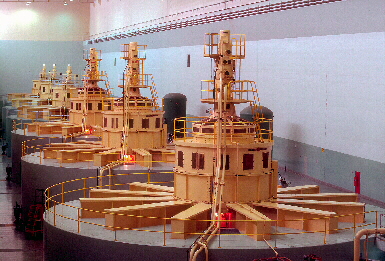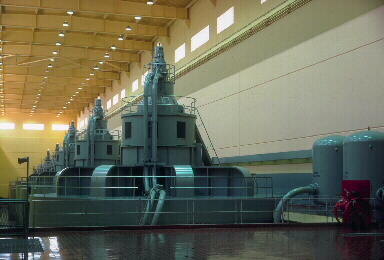How Generators Work
How An Electric Generator Works
An electric generator is a device used to convert mechanical energy into electrical energy.
The generator is based on the principle of "electromagnetic induction" discovered in 1831 by Michael Faraday, a British scientist. Faraday discovered that if an electric conductor, like a copper wire, is moved through a magnetic field, electric current will flow (be induced) in the conductor. So the mechanical energy of the moving wire is converted into the electric energy of the current that flows in the wire.
Interactive Electric Generator
Use Our Interactive Online Generator ToolPlease Note: Our interactive Generator is best viewed on a computer and may take awhile to download.
Interactive Electric Animation
The animation below shows a simple electric generator. In the animation, the mechanical energy needed to turn the generator comes from the brown hand crank at the front of the generator. In a hydroelectric power plant, the mechanical energy to turn the generator comes from the water turbine, which is turned by the force of falling water.
The hand crank in the animation causes the red wire to spin inside a magnetic field (the blue lines). As Faraday learned, moving the wire through the magnetic field causes electric current to flow in the wire. The turning red wire is connected to a volt meter, which shows the amount of electric current that is produced. In a hydroelectric plant, the generator is connected to transmission lines that deliver the electricity to your home or business.
The controls on the animation allow you to control the speed and direction of the generator and turn portions of the animation on and off for greater clarity. You can also use the radio buttons to show a direct current, or DC generator (with commutator) or an alternating current, or AC generator (without commutator).
Here are two pictures of the actual generators in hydroelectric power plants.


